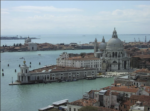Betye Saar – Uneasy Dancer
.jpg)
Curata da Elvira Dyangani Ose, “Betye Saar: Uneasy Dancer” è la prima esposizione in Italia dell’artista americana che riunisce più di 80 opere tra installazioni, assemblage, collage e lavori scultorei creati tra il 1966 e il 2016.
Comunicato stampa
Milano, 9 agosto 2016 – Fondazione Prada presenta a Milano dal 15 settembre 2016 al 8 gennaio 2017 “Uneasy Dancer”, una mostra antologica dedicata a Betye Saar (Los Angeles, 1926). L’anteprima stampa si svolgerà mercoledì 14 settembre, dalle ore 10 alle 13. Curata da Elvira Dyangani Ose, “Betye Saar: Uneasy Dancer” è la prima esposizione in Italia dell’artista americana che riunisce più di 80 opere tra installazioni, assemblage, collage e lavori scultorei creati tra il 1966 e il 2016.
“Uneasy Dancer” (danzatrice incerta) è l’espressione con cui Betye Saar definisce se stessa e il proprio lavoro che, per usare le sue parole, “segue il movimento di una spirale creativa ricorrendo ai concetti di passaggio, intersezione, morte e rinascita, nonché agli elementi sottostanti di razza e genere”. Il suo processo artistico implica “un flusso di coscienza” che esplora il misticismo rituale presente nel recupero di storie personali e di iconografie da oggetti e immagini quotidiani. Al centro della sua opera si possono individuare alcuni elementi chiave: l’interesse per il metafisico, la rappresentazione della memoria femminile e l’identità afroamericana che, grazie al suo lavoro, assumono forme e significati inediti. Come sostiene Saar, la sua arte “ha più a che fare con l’evoluzione che non con la rivoluzione, con la trasformazione delle coscienze e del modo di vedere i neri, non più attraverso immagini caricaturali o negative, ma come esseri umani”.
Attraverso il suo uso esperto di materiali di recupero, memorabilia personali e immagini dispregiative che richiamano storie negate o deformate, Saar sviluppa una potente critica sociale che sfida gli stereotipi razziali e sessisti radicati nella cultura americana. Negli anni Settanta, i suoi assemblaggi iniziano ad assumere dimensioni sempre maggiori, e diventano delle vere e proprie installazioni, accomunate da un approccio che unisce visioni e fedi di ogni tipo – da quelle più personali e misteriose a quelle universali – accostandole a riflessioni politiche.
Come osserva Elvira Dyangani Ose, “Saar confonde i confini tra arte e vita, tra piano fisico e metafisico. Il carattere spirituale della sua produzione non risiede solo nelle opere in cui trova espressione diretta il suo interesse per una pluralità di tradizioni culturali. Risiede soprattutto nell’operazione artistica che trasforma materiali comuni in nuove iconografie evocative, in suggestive narrazioni del reale capaci di coinvolgere intimamente l’osservatore”.
“Uneasy Dancer” espande nel suo complesso temi fondamentali della pratica di Betye Saar, tra i quali la memoria, il misticismo e la costruzione di entità socio-politiche. Questo emerge nell’opera seminale The Alpha and The Omega (The Beginning and The End) (2013-16), un ambiente circolare che allude al viaggio iniziatico e all’esperienza della vita umana. Questa installazione è stata concepita in occasione della mostra e include una serie di nuovi elementi che rappresentano l’idea del tutto, nella sua circolarità.
In mostra saranno presenti i suoi assemblaggi di immagini e oggetti inseriti in scatole o valigie, come Record for Hattie (1975) e Calling Card (1976), che assumono una dimensione performativa, anche se in miniatura. Altri assemblaggi, creati più recentemente e contenuti all’interno di gabbiette, come Domestic Life (2007) e Rhythm and Blues (2010), rappresentano una condizione fisica e metaforica di segregazione, ma anche di resistenza e sopravvivenza. Questi lavori includono tracce del folclore afroamericano, combinando la dimensione politica a una visione spirituale che attinge a molteplici credenze e tradizioni di origine africana, asiatica, americana ed europea.
Inoltre sarà presentata una serie di opere che utilizzano strumenti di lavoro o elementi della vita domestica, come assi per il bucato, bilance e finestre, assemblati a fotografie o manufatti d’epoca, come le opere Mystic Window for Leo (1966), The Phrenologer’s Window (1966) e A Call to Arms (1997). Questi ultimi lavori che abbracciano vari decenni svelano, da un lato, una condizione intima e autobiografica e dall’altro alludono a una dimensione immaginativa e fantastica. L’impiego di fotografie, trattate come oggetti trovati, in lavori come Migration: Africa to America I (2006), diventa una modalità di celebrazione della bellezza e degli artifici della femminilità.
In tutta la sua carriera Saar ha portato avanti una posizione artistica che, oltre a opporsi al pensiero maschilista ed eurocentrico, sostiene una prospettiva umanistica che riconsidera le nozioni di individuo, famiglia, comunità e società.
Fondazione Prada presents the exhibition “Uneasy Dancer”, a comprehensive survey of work by Betye Saar (Los Angeles, 1926). This exhibition, hosted at the Nord Gallery, opens to the public from 15 September 2016 through 8 January 2017. Curated by Elvira Dyangani Ose, “Betye Saar: Uneasy Dancer” is the first exhibition of the American artist in Italy, and brings together over 80 works including installations, assemblages, collages and sculptures produced between 1966 and 2016.
“Uneasy Dancer” is an expression Betye Saar has used to define both herself and her artistic practice. In her own words, “my work moves in a creative spiral with the concepts of passage, crossroads, death and rebirth, along with the underlying elements of race and gender.” This process implies “a stream of consciousness” that explores the ritualized mysticism present in recovering personal stories and iconographies from everyday objects and images. Several key elements lie at the center of her artistic practice: an interest in the metaphysical, the representation of feminine memory, and African-American identity which, in her work, takes on takes on evocative and unusual forms. As Saar has said about her work, “It was really about evolution rather than revolution, about evolving the consciousness in another way and seeing black people as human beings instead of the caricatures or the derogatory images.”
Through her confident usage of found objects, personal memorabilia and derogatory images that evoke denied or distorted narratives, Saar developed a powerful social critique that challenges racial and sexist stereotypes deeply rooted in American culture. In the 1970s, her assemblages began to grow in scale, ultimately becoming substantial installations and immersive environments that speak to an approach uniting spiritual beliefs and faiths of all kind – from the intimate and the mysterious to the universal – alongside politicized convictions.
Curator Elvira Dyangani Ose notes, “Saar’s works blur boundaries between art and life, between physical and metaphysical. Spirituality in her work, does not only resides in the works with which she addresses her concerns and her knowledge on a myriad of traditions. On the contrary, it is to be found in the artistic exercise of transforming common material in a sort of evocative new imagery, involving the viewer in reminiscent fabulations of the real.”
“Uneasy Dancer” expands holistically on fundamental tenants of Saar’s practice including memory, mysticism and the construction of socio-political identifiers. This is none so much apparent than in the seminal work The Alpha and the Omega (2013–2016), a circular environment alluding to the initiatory journey and the experience of human life. This installation was specifically conceived for “Uneasy Dancer”, and will include a number of newly created elements denoting the idea of representing the whole of anything, from beginning to end.
Earlier assemblages involving objects inserted within boxes or suitcases, like Record for Hattie (1975) and Calling Card (1976), take on a performative dimension even when rendered in an intimate scale. Sculptural floor works utilizing cages, such as Domestic Life (2007) and Rhythm and Blues (2010), simultaneously represent the physical and metaphorical condition of segregation, and the increased need for resistance and survival. These works specifically reference African-American folklore, combining a political dimension with a spiritual vision that draws on a multiplicity of traditions stemming from Africa, Asia, America and Europe.
The exhibition additionally highlights a series utilizing work tools and elements of domestic life, such as washboards and scales, alongside either found or inherited photographs, as in the works Mystic Window for Leo (1966), The Phrenologer’s Window (1966) and A Call to Arms (1997). Spanning the length of several decades, these aforementioned works reveal, on one hand, an intimate and autobiographical condition, whilst on the other, allude to an imaginative, fantastical dimension. Saar’s use of photography, treated here as a found object rather than a singular flatness, in works such as Migration: Africa to America I (2006) becomes a way to celebrate both the beauty and artifices of femininity.
Throughout her career Saar has engaged with a practice which, in addition to opposing male chauvinist and Euro-centric thinking, supports a humanistic perspective that reconsiders notions of the individual, family, community and society.
The exhibition “Betye Saar: Uneasy Dancer” will be accompanied by an illustrated publication, edited by Fondazione Prada, with essays by the curator Elvira Dyangani Ose and scholars Kellie Jones (Columbia University), Richard J. Powell (Duke University), and Deborah Willis (New York University).



